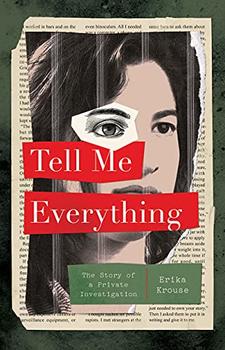Summary | Excerpt | Reading Guide | Reviews | Beyond the Book | Read-Alikes | Genres & Themes | Author Bio

This article relates to Why Be Happy When You Could Be Normal?
In a passage on suicide, Winterson remarks that "when natural gas was introduced in the 1960's, the British suicide rate fell by one-third." I thought that perhaps she was using some creative math for dramatic effect, but a little research revealed that she wasn't exaggerating at all. Here's a summary of the way things were in Great Britain before the introduction of natural gas, from the New York Times:
For generations, the people of Britain heated their homes and fueled their stoves with coal gas. While plentiful and cheap, coal-derived gas could also be deadly; in its unburned form, it released very high levels of carbon monoxide, and an open valve or a leak in a closed space could induce asphyxiation in a matter of minutes. This extreme toxicity also made it a preferred method of suicide. 'Sticking one's head in the oven' became so common in Britain that by the late 1950s it accounted for some 2,500 suicides a year, almost half the nation's total.
Starting in the 1960s, the fuel used to heat homes became cleaner and carbon monoxide was practically eliminated. By the early 1970s, the suicide rate in Britain had fallen by nearly 40 percent. It seems truly remarkable that, of every ten people on the brink of suicide, four would choose to go on living instead, simply because suicide was no longer as easy as sticking one's head in the oven. The lesson that some experts have drawn from this is that suicide is an extremely impulsive act, and that the difference between going through with it or backing out can come down to how "convenient" it is to get the job done. As if to drive the point home, the suicide rate dipped even further in the 1990s, after the introduction of catalytic converters cut the amount of carbon monoxide coming out of car tail pipes.
To other experts though, it seems that people who kill themselves come from two groups. The first are those that have long reported suicidal thoughts and have devised methods that require planning and make it possible that their lives will be saved (pill overdoses, wrist-cutting). In the second group are people that have not reported suicidal thoughts, and are likely to use more "successful" methods, such as gunshots or falls from a precipice. Consider these statistics from the New York Times in an article entitled, "The Urge to End It All": "Even though guns account for less than 1 percent of all American suicide attempts, their extreme fatality rate - anywhere from 85 percent and 92 percent, depending on how the statistics are compiled - means that they account for 54 percent of all completions."
For more information, check out a related article on The Effects of Detoxification of Domestic Gas on Suicide in the United States.
Filed under Society and Politics
![]() This "beyond the book article" relates to Why Be Happy When You Could Be Normal?. It originally ran in March 2012 and has been updated for the
March 2013 paperback edition.
Go to magazine.
This "beyond the book article" relates to Why Be Happy When You Could Be Normal?. It originally ran in March 2012 and has been updated for the
March 2013 paperback edition.
Go to magazine.




Be sincere, be brief, be seated
Click Here to find out who said this, as well as discovering other famous literary quotes!
Your guide toexceptional books
BookBrowse seeks out and recommends the best in contemporary fiction and nonfiction—books that not only engage and entertain but also deepen our understanding of ourselves and the world around us.